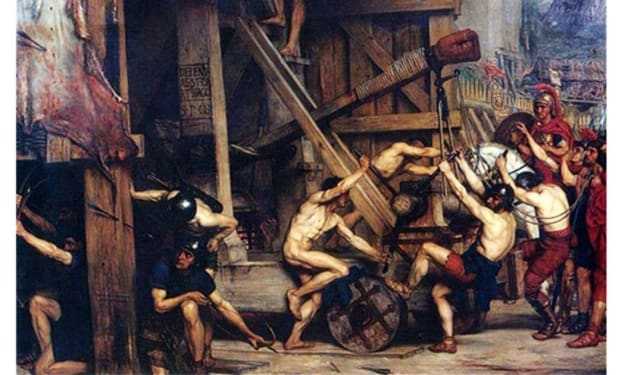Content warning
This story may contain sensitive material or discuss topics that some readers may find distressing. Reader discretion is advised. The views and opinions expressed in this story are those of the author and do not necessarily reflect the official policy or position of Vocal.
The Evolution of Language
Unveiling the Tapestry of Human Communication
Introduction
Language is the remarkable thread that weaves humanity together, enabling us to communicate, express our thoughts, and share our knowledge. It is a tool that has evolved over thousands of years, molding and adapting to the needs of diverse societies and cultures. This essay delves into the fascinating history of language, tracing its origins, development, and the profound impact it has had on the progress of human civilization.
Origins of Language
The quest to uncover the origins of language takes us deep into the annals of prehistory. Though concrete evidence is elusive, scholars propose several theories. The "Bow-Wow" theory suggests that early human language mimicked natural sounds, while the "Yo-He-Ho" theory proposes that language emerged from the rhythmic grunts and gestures used during communal labor. Another prominent theory is the "La-la" theory, which suggests that language originated from musical sounds and vocal expressions.
Prehistoric and Ancient Languages
The first true languages emerged during the Paleolithic era, as evidenced by cave paintings and early symbolic communication systems. These languages were likely simple and specific to immediate needs. With the advent of agriculture and settled communities, languages became more complex. Ancient civilizations such as Mesopotamia, Egypt, and China witnessed the development of written scripts, which enabled the recording and transmission of knowledge.
Classical Languages and the Birth of Writing
The emergence of classical languages, such as Sanskrit, Greek, and Latin, marked a pivotal point in language history. These languages became the foundation of literature, philosophy, and scientific discourse. The development of writing systems, such as cuneiform, hieroglyphics, and alphabets, revolutionized communication by enabling the preservation and dissemination of information across time and space.
Language in Medieval and Renaissance Periods
The Middle Ages witnessed the rise of vernacular languages, as literature and culture expanded beyond the confines of classical tongues. The growth of trade and exploration led to the enrichment of languages through the integration of foreign words. The Renaissance further transformed language by promoting humanism and emphasizing individual expression. The printing press, invented by Gutenberg, played a crucial role in disseminating knowledge to broader audiences.
Modern Era and Global Language
The modern era witnessed significant linguistic developments. The Industrial Revolution and scientific advancements led to a proliferation of specialized vocabularies. The colonization of vast territories by European powers introduced new languages and catalyzed the emergence of creole and pidgin languages. The 20th century saw the rise of English as a global lingua franca, primarily due to the political and economic influence of the British Empire and later the United States.
Language in the Digital Age
The advent of the digital age revolutionized language and communication. The internet, social media, and instant messaging platforms created new avenues for linguistic expression. The widespread use of emojis, acronyms, and abbreviations reflects the need for concise and rapid communication. Moreover, machine translation and natural language processing have bridged linguistic barriers, connecting people across different languages and cultures.
Linguistic Studies and Language Evolution
The study of language evolution became a significant area of research in the 19th and 20th centuries. Linguists such as Ferdinand de Saussure, Noam Chomsky, and Edward Sapir made groundbreaking contributions to understanding the structure and development of languages. Saussure's structuralism emphasized the internal system of language, while Chomsky's generative grammar focused on the innate cognitive mechanisms underlying language acquisition. Sapir's work highlighted the influence of culture on language and proposed the concept of linguistic relativity.
Advancements in historical linguistics revealed the interconnectedness of languages through the discovery of language families. The Indo-European language family, comprising languages such as English, German, Sanskrit, and Persian, demonstrated a shared ancestral language spoken thousands of years ago. Comparative linguistics allowed scholars to reconstruct proto-languages and trace their evolution over time, providing insights into ancient cultures and migrations.
Language Preservation and Endangered Languages
As languages evolve, some face the threat of extinction. Globalization and dominant languages can erode linguistic diversity, endangering unique cultural perspectives encoded within languages. Efforts have been made to document and preserve endangered languages, recognizing the importance of linguistic diversity for humanity's collective heritage. Initiatives such as language revitalization programs, digital archives, and community-led language documentation projects aim to safeguard endangered languages for future generations.
Future Directions: Artificial Intelligence and Language
The ongoing advancements in artificial intelligence (AI) have opened up new frontiers in the study and use of language. Natural language processing (NLP) and machine learning techniques have enabled machines to understand, generate, and translate human language with increasing accuracy. Chatbots, voice assistants, and language translation tools have become everyday companions, transforming the way we interact with technology and each other.
The field of computational linguistics explores the intersection of language and technology, seeking to enhance human-computer interaction and develop intelligent language processing systems. However, questions about the ethical implications of AI in language, such as bias and privacy concerns, continue to arise and necessitate careful considerations.
Conclusion
The history of language is a captivating journey through time, illuminating the human quest for communication, expression, and understanding. From ancient cave paintings to modern digital platforms, language has evolved and adapted, reflecting the dynamics of societies, cultural interactions, and technological advancements. As we embrace the future, the study and preservation of language remain vital, fostering inclusivity, cultural exchange, and the exploration of the rich tapestry of human communication.
The history of language is a captivating tale of human ingenuity, adaptation, and cultural exchange. From its mysterious origins to its contemporary digital manifestations, language has been a cornerstone of human development, shaping societies, fostering creativity, and enabling meaningful connections between individuals across time and space.
About the Creator
Enjoyed the story? Support the Creator.
Subscribe for free to receive all their stories in your feed. You could also pledge your support or give them a one-off tip, letting them know you appreciate their work.







Comments
There are no comments for this story
Be the first to respond and start the conversation.